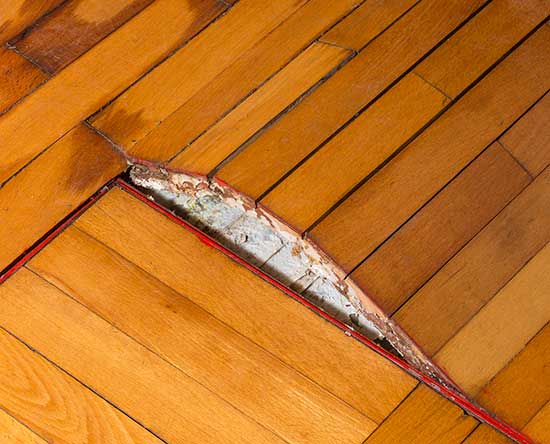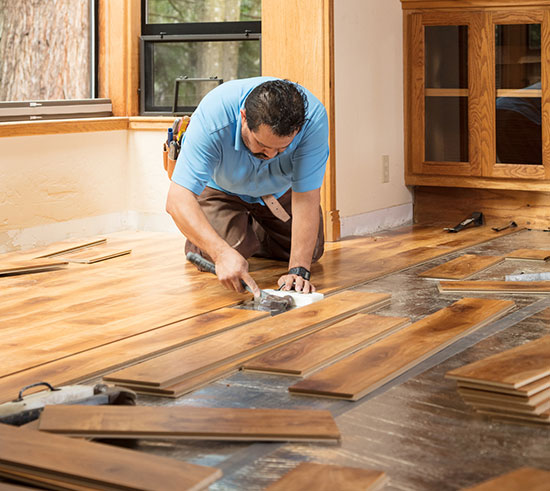Moisture Testing: The Key to Preventing a Flooring Disaster

Finished floors made of wood are especially susceptible to moisture damage.
Previously published in ProInstaller magazine
Moisture can be a problem for most any floor, whether you’re working with wood, concrete, carpet, tile, resilient flooring, or other materials. Failure to pay attention to moisture before and during your floor installation puts you at serious risk for a huge headache later.
Fortunately, preventing moisture-related problems is easy. Simply test for moisture beforehand. Then, depending on your test results, determine when you can safely proceed with your installation.
Always Evaluate Subfloor Moisture
No matter what type of floor product you wish to install, you must consider the moisture condition of the subfloor.
Remember—even for tile or other floor materials, moisture could still wreak havoc. And in the case of carpet, excess subfloor moisture could lead to mildew or odor problems.
For a subfloor made of wood, plywood, or OSB, use a high-quality handheld moisture meter to measure the moisture content (MC). Be sure to set the meter for the type of subfloor material you’re working with to ensure accurate readings.
You’ll want MC readings in the low range, typically between 6 and 9%, although your target number may be higher, or lower, depending on your location. Be sure you use a meter that’s capable of taking readings in this range.
If you’ve got a concrete floor slab, use the in situ relative humidity (RH) test per ASTM F2170. This is the most reliable method for assessing a slab’s readiness for a floor installation. You can easily compare your test results against the RH specification for a particular flooring product to decide when the concrete is sufficiently dry.
Wood: A Special Case

Before installation, allow wood flooring to acclimate onsite at least 3 to 7 days
You won’t need to measure the MC of flooring materials, such as carpet, ceramic tile, or resilient flooring. But wood, by nature, is especially susceptible to moisture damage. Therefore, if installing any type of wood product, use a wood moisture meter to measure its MC%. As with the subfloor, you’ll want the wood’s MC% to be in the low range, usually 6 to 9%.
This necessitates delivering the wood ahead of time and allowing it to acclimate onsite at least 3 to 7 days (longer, if needed). As with anything though, consult the product manufacturer’s requirements for acclimation.
Preventing a Moisture Disaster
Follow these simple guidelines for moisture testing and you’ll be well on your way to preventing a flooring disaster. For more information about how to measure moisture in a variety of flooring materials, visit www.wagnermeters.com.